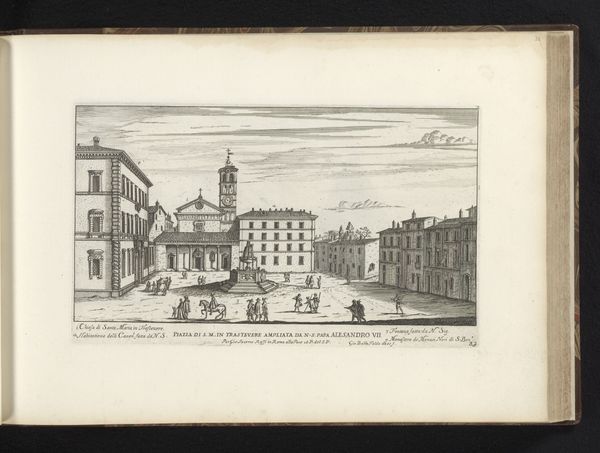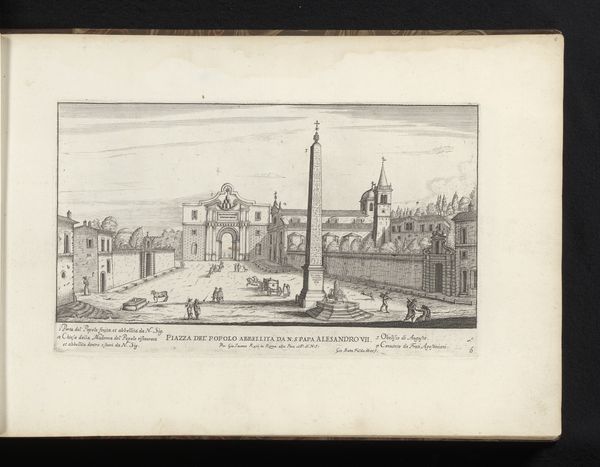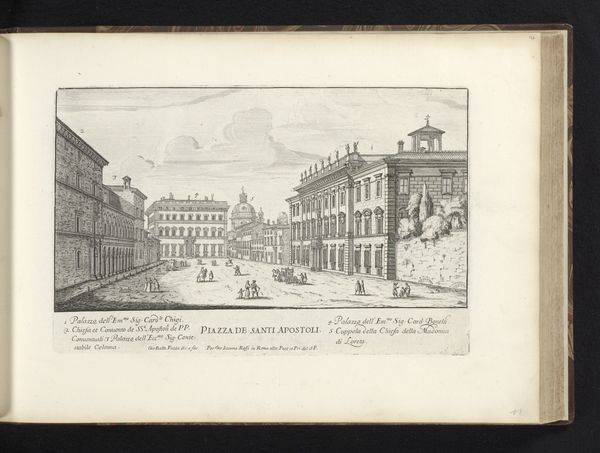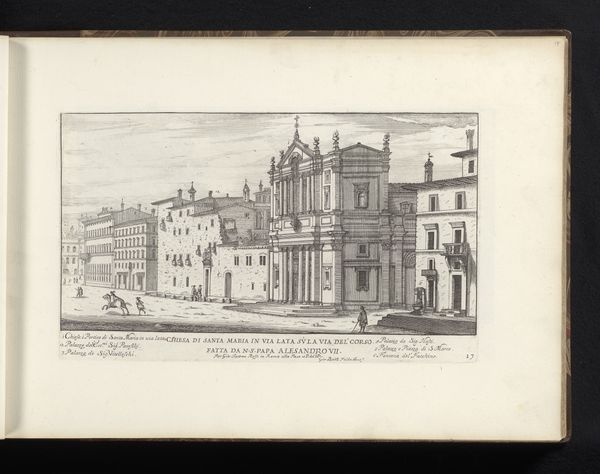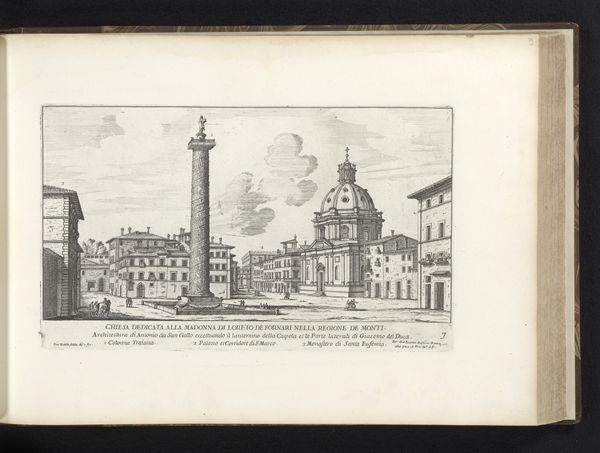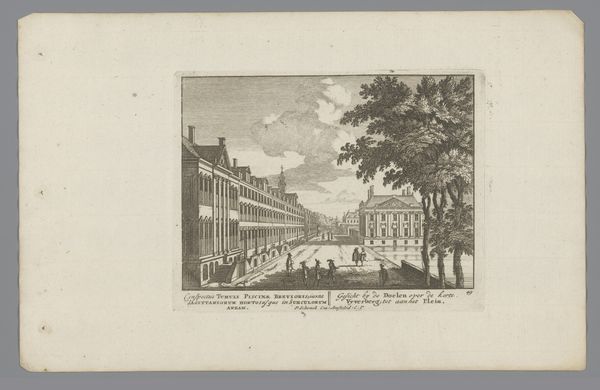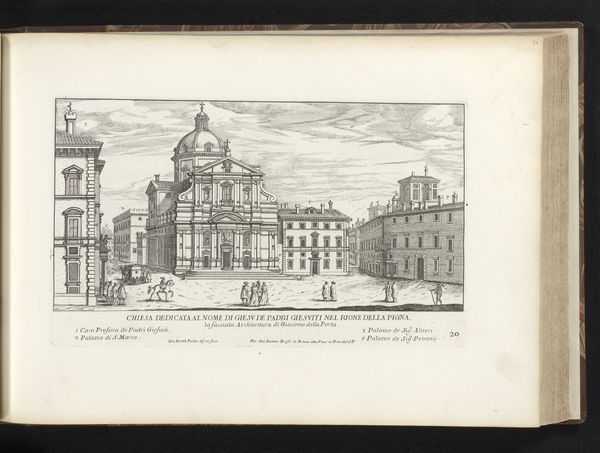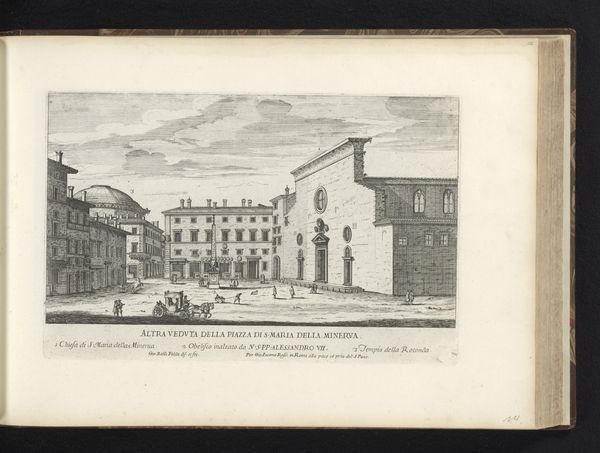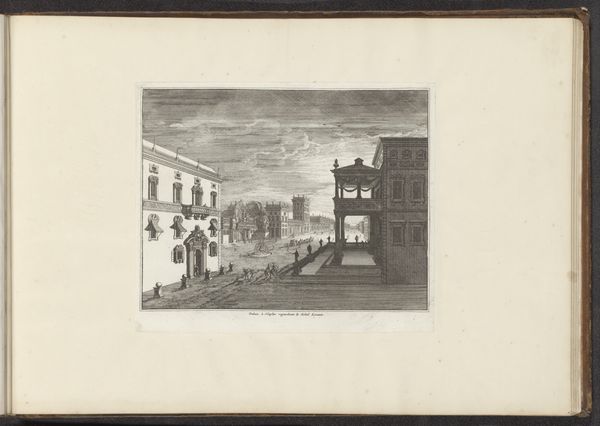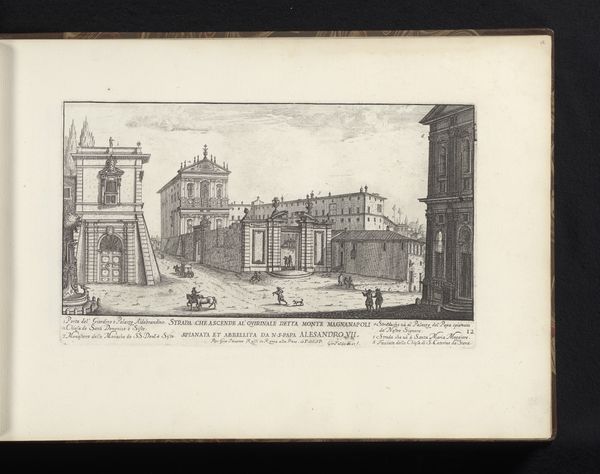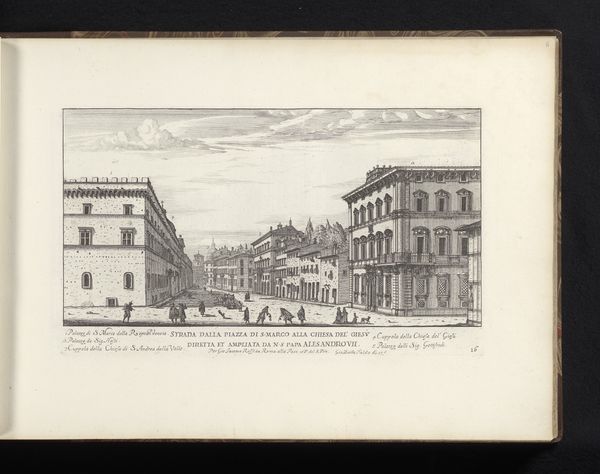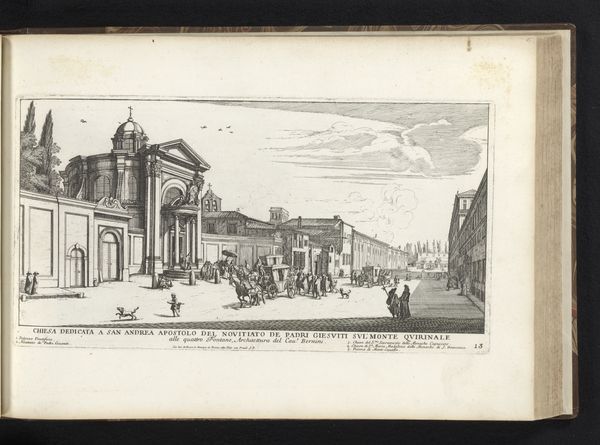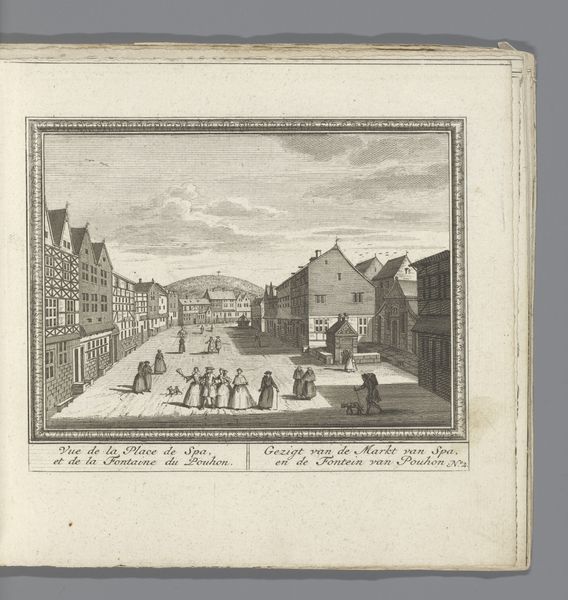
Piazza della Minerva en de kerk de Santa Maria sopra Minerva te Rome 1665 - 1667
giovannibattistafalda
Rijksmuseum
print, etching
baroque
etching
landscape
cityscape
italian-renaissance
Dimensions: height 170 mm, width 288 mm
Copyright: Rijks Museum: Open Domain
Giovanni Battista Falda created this print of Piazza della Minerva and the church of Santa Maria Sopra Minerva in Rome around the 17th century. The composition centers on the church's facade, framed by the geometric regularity of the surrounding buildings. Notice how the stark lines of the architecture create a sense of order, which contrast with the animated figures populating the piazza. The print meticulously balances light and shadow to define the forms, a technique common in Baroque art for enhancing depth. Falda uses line and perspective to establish a clear hierarchy, drawing our eye toward the church. The obelisk becomes a symbolic marker, connecting the earthly with the celestial, a visual representation of power and knowledge. Consider how Falda, through his careful arrangement of space and form, engages with ideas of urban order and civic pride. The print is not just a depiction of a place but an assertion of Rome's cultural significance, communicated through the careful manipulation of line, form, and composition.
Comments
No comments
Be the first to comment and join the conversation on the ultimate creative platform.
